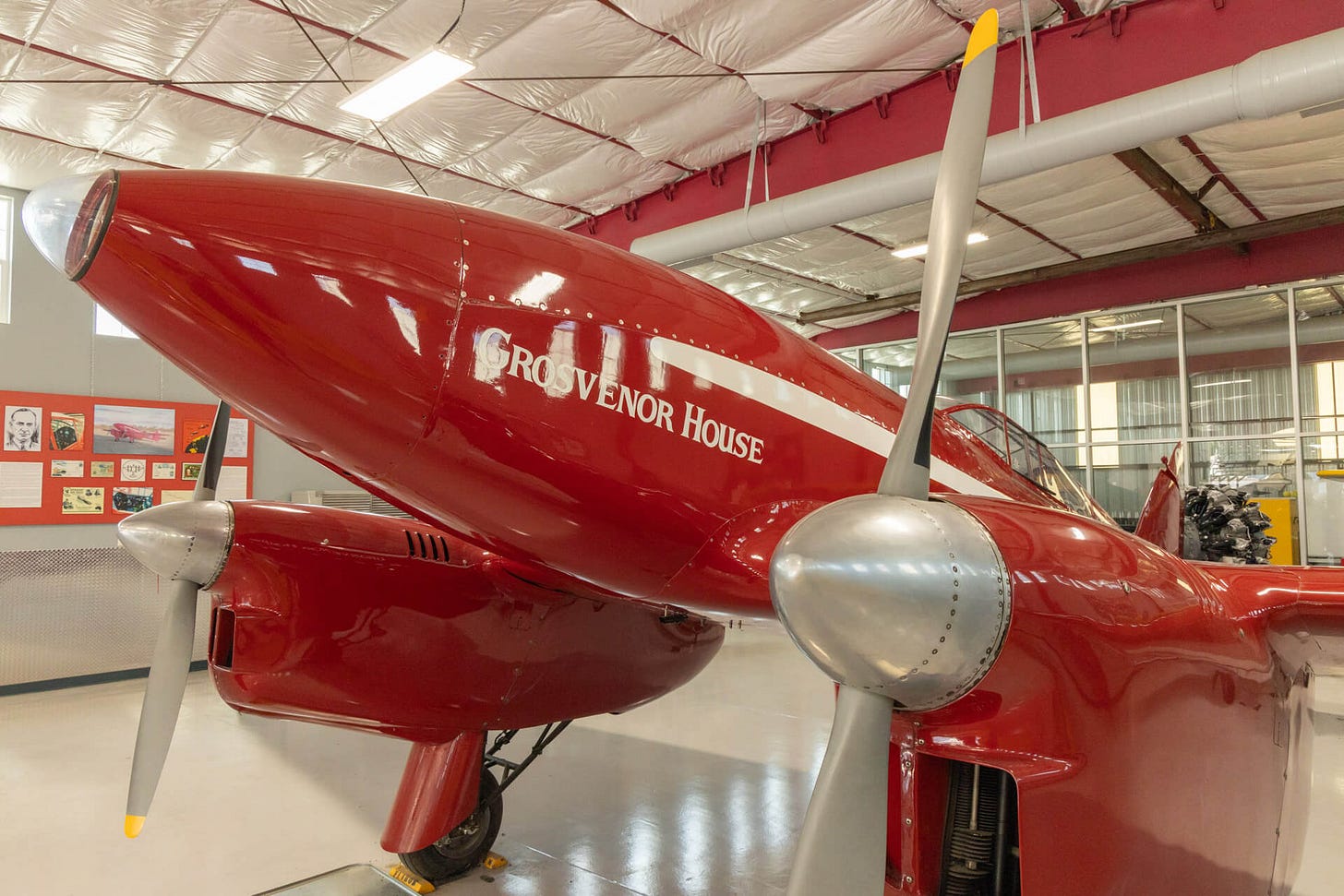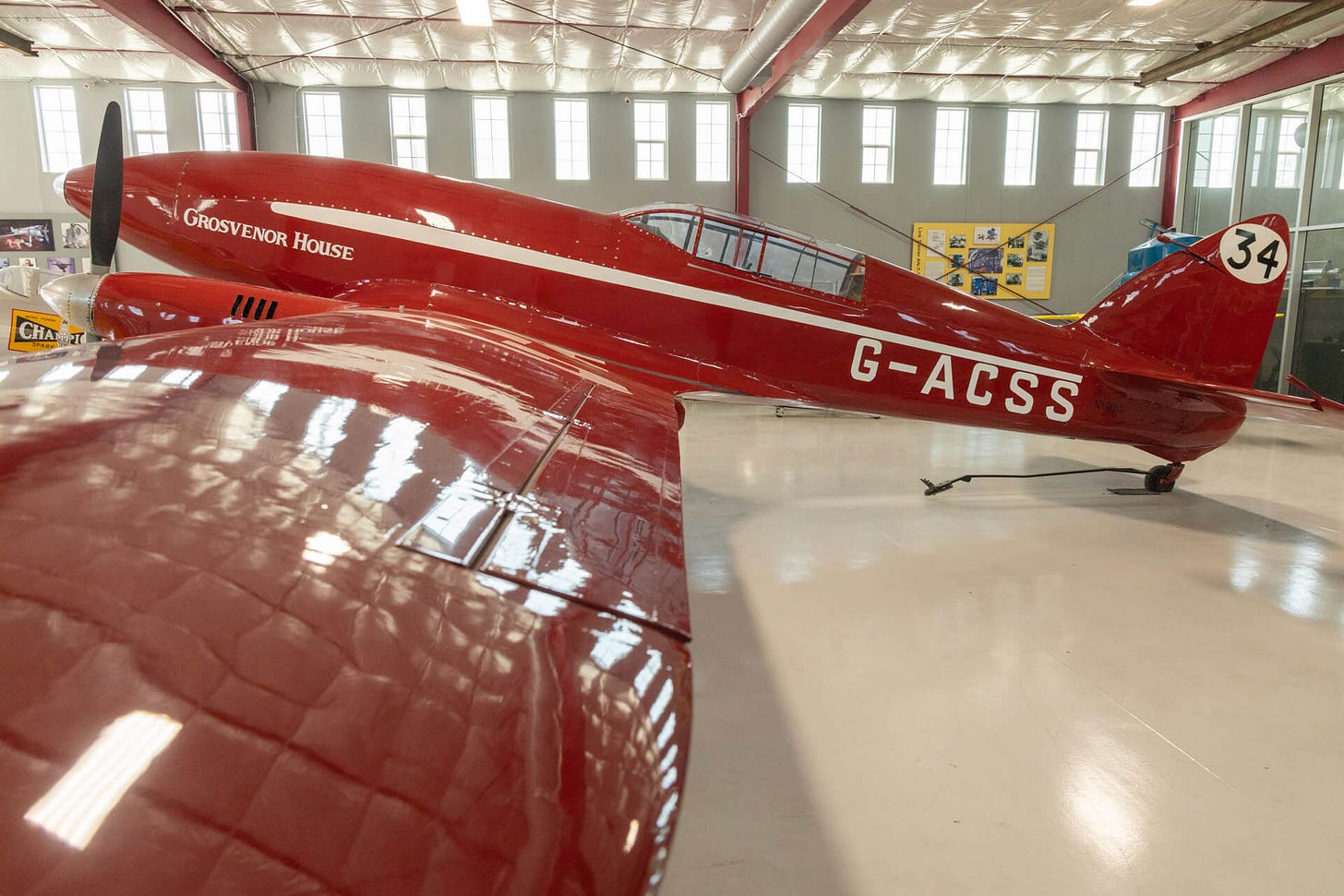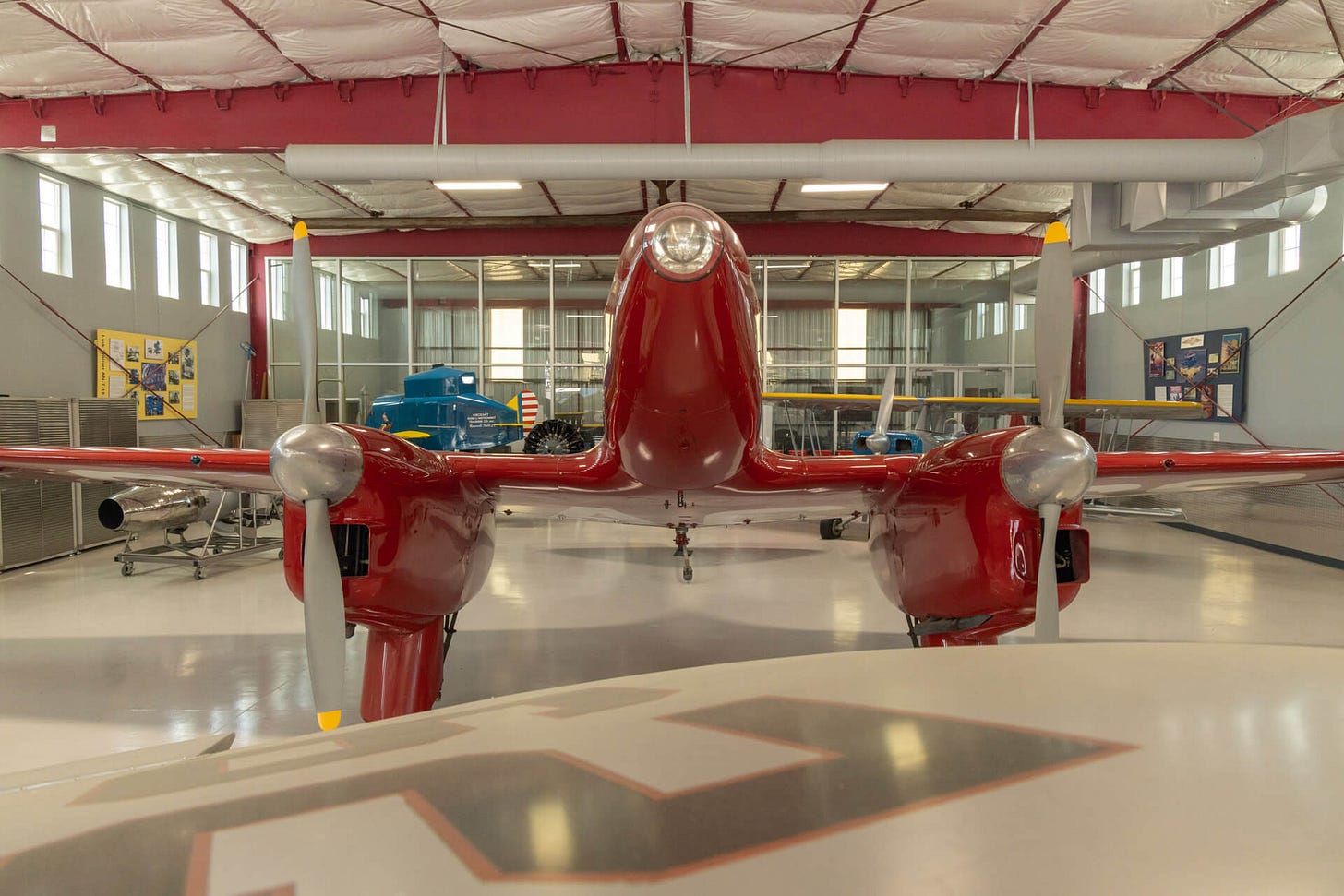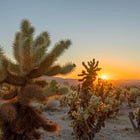DH-88 Comet Grosvenor House
Explore Landscapes #48: An opportunistic post today since this weekend I visited a replica of a 1930s aircraft that I spent months working on as a young apprentice at British Aerospace Hatfield.
If you‘re new here, welcome. I’m a professional landscape photographer and hiking/backpacking guide specializing in Joshua Tree National Park. My weekly Monday newsletter is typically a long-form ‘teaching’ article for paid subscribers and workshop attendees. My free Thursday newsletter should interest a wider audience and is typically about my hiking, volunteering, or workshop adventures.
Please subscribe to read more of my posts, visit my website to view my images, or book a workshop or mentoring session. If you value what I provide, consider becoming a paid subscriber or buying me a coffee instead. I look forward to helping you improve your photography!
Today’s post is on a topic I’ve mentioned very little (if at all) in previous posts - my career and background in aviation. Since I was a young boy, I’ve been fascinated by aircraft. This is thanks to my Uncle Jim, who was in the UK Royal Air Force when I was growing up. Jim took me to numerous UK airshows and hooked me on aviation.
I dropped out of school early and started an apprenticeship at British Aerospace (BAe) in Hatfield. After a year’s basic training, one of my first assignments was spending six months helping restore the DH-88 Comet Racer to flying condition. It had last flown in 1938.

The trigger for this trip down memory lane (almost 40 years later) was attending an aviation photography workshop at Flabob Airport (in Riverside, CA) hosted by my friend (and talented photographer) Tom O’Keefe.
Hangar 20 at Flabob was the home of Bill Turner’s Repeat Aircraft. Bill built replicas of Golden Age air racers, some of which are displayed inside Hangar 20. Under commission by Tom Wathen, he built replicas of the DH-88 Comet Grosvenor House and the Laird-Turner LTR-14 Miss Champion.
This post is a bit on the long side, and Substack is telling me it may get truncated when delivered to your email inbox. If so, please click ‘View in browser’ at the top right of the email.
Today, the Tom Wathen Center uses the fascination of flight to inspire the love of learning for successful careers and satisfying lives. They say, “We include all people — especially youth, veterans, and the disadvantaged and challenged. At our historic Flabob Airport, there is excitement in working with the head, hand, and heart side by side with pilots, craftsmen, and innovators in an authentic workplace. We preserve and disseminate the history of aviation, and encourage and nourish the designers, builders, and innovators of tomorrow.”
Thanks to Tom Wathen, Flabob pilots have flown over 12,000 children (an EAA record) for the EAA’s Young Eagles program. Quite a few of those kids have gone on to earn their pilot’s license.
Developing the DH-88 Comet began as the brainchild of Geoffrey de Havilland, who was eager to produce a purpose-built aircraft to win the 1934 MacRobertson Race from England to Australia and gain from the research involved in producing it.
The Comet was designed around the specific requirements of the race, building a two-seat twin-engine aircraft with a new and innovative design concept. It is a stressed-skin cantilever monoplane with an enclosed cockpit, retractable landing gear, landing flaps, specifically developed Gipsy racing engines and variable-pitch propellers.

Three Comets were constructed for the race for private owners at £5,000 per aircraft. The DH-88 underwent an accelerated development program and performed its first flight just six weeks before the race.
Starting in Mildenhall, England, the race would be flown in stages for refueling, with stops at Baghdad, Iraq, followed by Allahabad in Saudi Arabia and Singapore. Once in Australia, there would be refueling stops at Darwin and Charleville, and the finish line would be at Melbourne.
Three comets lined up for takeoff at Mildenhall. C.W.A. Scott and Tom Black flew the bright red Grosvenor House (the name honoring the aircraft's owner's hotel). Ken Waller and Owen Jones piloted the second, painted British Racing Green. Quiet Birdman Jim Mollison and his wife Amy flew the third, Black Magic.
Mollison, a Scot, set many flying records during his career. In 1931, he flew from Australia to England in eight days and nineteen hours; in 1932, he flew from England to South Africa in four days and seventeen hours.

The Comets were not alone in the race; they took off with seventeen other entrants. One included the notable QB Roscoe Turner (QB = Quiet Birdmen, a secretive club in the United States for male aviators), who flew a Boeing Model 247 with QB Clyde Pangborn as his co-pilot.
On October 20th, 1934, the twenty planes launched from England with Mollison's Comet Black Magic leading the pack to Baghdad. However, they were forced to retire at Allahabad after using non-aviation fuel, which damaged their engines. Turner and Pangborn were doing well until Allahabad, when they were forced to land in darkness, almost out of fuel. Once over Australia, these QBs started having engine trouble, causing them to land and make repairs and taking up valuable time before placing Third after 92 hours and 55 minutes. Second place went to a Dutch KLM Boeing DC-2 with a time of 90 hours and 13 minutes. The big winner was the bright red DH-88 Grosvenor House Comet, flown by Scott and Black, turning in a time of 71 hours to score the victory.
Apart from one Comet winning the race, the significance was the semi-monocoque stressed wooden construction with exceptional aerodynamic cleanliness, later incorporated for the de Havilland's Mosquito fighter/bomber of World War II. In addition to gaining bragging rights from the victory of the MacRobertson Race, de Havilland was able to use the development and experience gained from the DH-88 Comet to develop and transfer their racing technology to create one of the fastest and most versatile warplanes of the second world war.
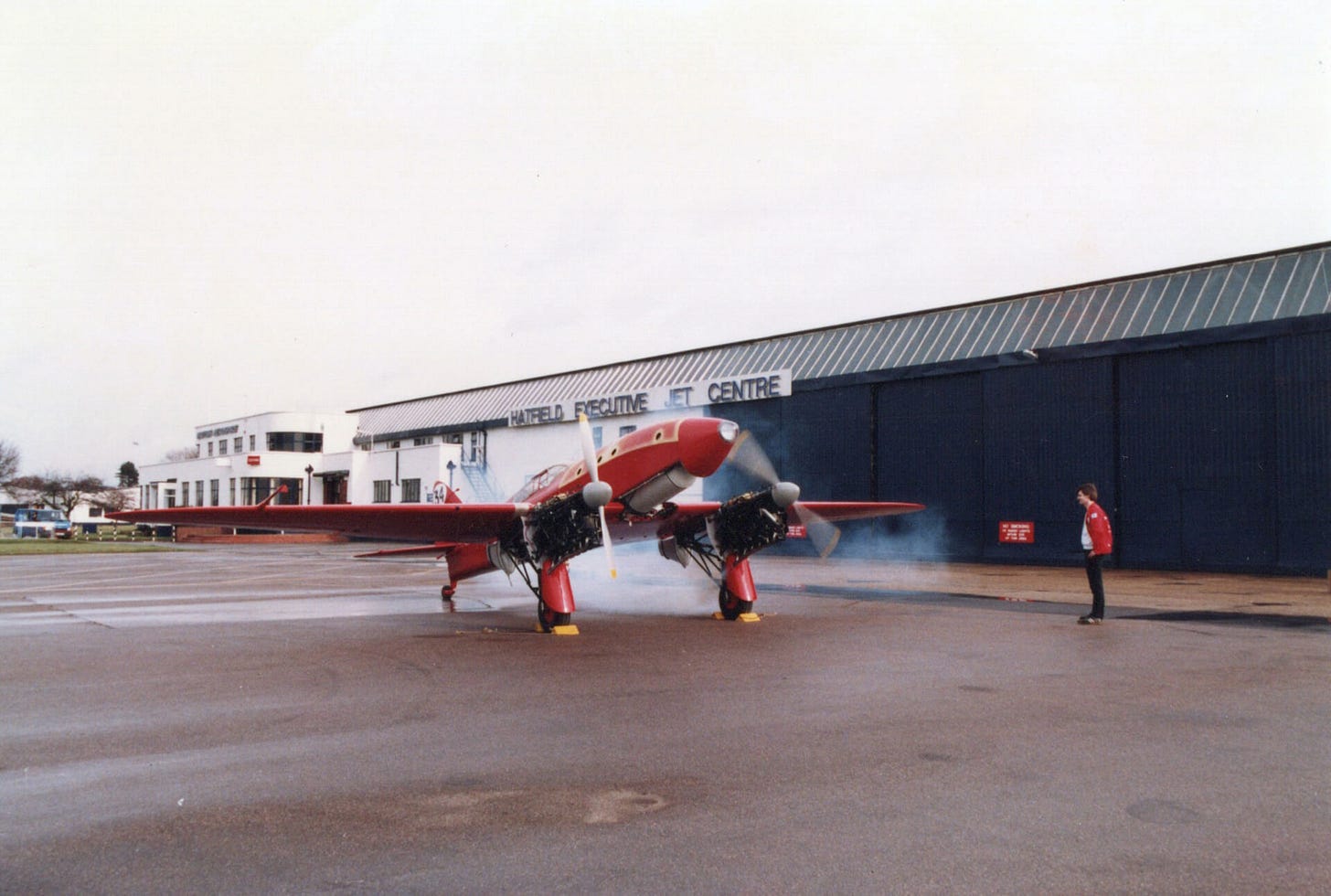
There was a huge push to try to get Grosvenor House ready for the Mildenhall Air Fete, which was to be held on 23 May 1987. On 28 March 1987, a little less than 2 months before Mildenhall, the Gipsy Queen II engines were fired up for the first time.
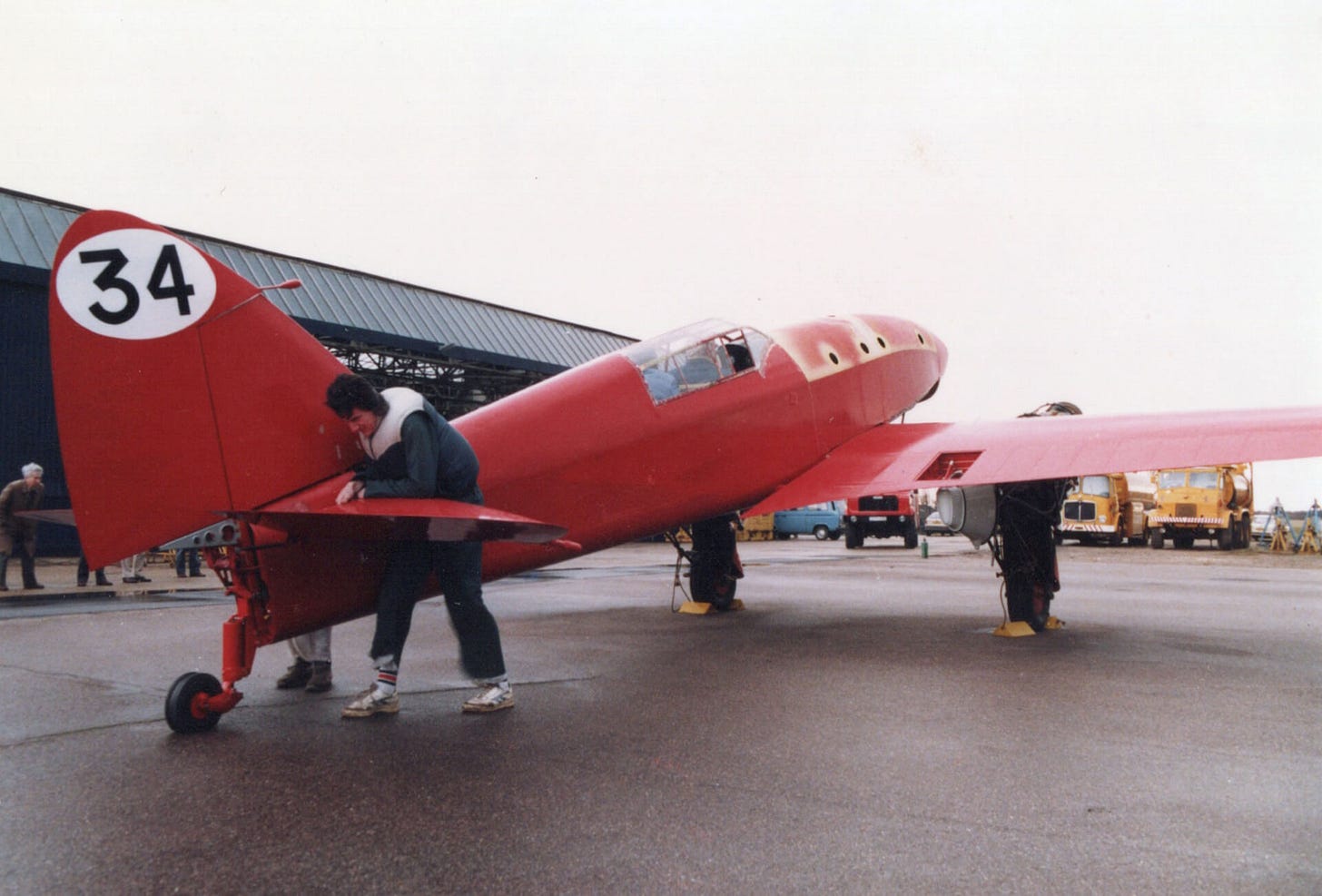
One of the duties that Paul and I were given during our time with the Comet Racer was to hold down the tailplane as the engines were run up to speed. I dare say that health and safety would have something to say about this if it were happening today.

On 17 May 1987, it was a huge privilege for me to witness Grosvenor House, piloted by BAe test pilot George Ellis, getting airborne for the first time since before the Second World War. I will never forget the exhilaration of watching a historical aircraft you’ve worked on take off for the first time. The Comet’s restoration started in 1974. Thirteen years later, thanks to the dedication of many organizations (including BAe the Shuttleworth Collection) and an amazing team pulled together by Ron Paine (the ‘main man’ as far as the Comet restoration was concerned), it flew again.
Paul and I accompanied Grosvenor House to the Mildenhall Air Fete on 23 May 1987. Air Fete 1987 witnessed the Comet’s post-restoration debut and presented it within a de Havilland gathering staged in its honor. It was an amazing experience to have an airside pass for the Air Fete, work as ground crew for Grosvenor House, and hang out with many other aircraft enthusiasts. Another perk of being at Mildenhall was staying in the Officer’s Mess with the USAF SR-71 Blackbird pilots.
Walking around hangar 20 this past weekend awoke many great memories of my early days in aviation. I spent over an hour in the hangar looking over every inch of the replica and remembering those good times from 37 years ago.
What to expect this week:
On Monday, paid subscribers will receive a post from me on Making the Move to Manual.
On Thursday, all subscribers will get a post on my First Fifty Posts.
Let me be your landscape photography guide to Joshua Tree National Park
My workshops cater to all levels of photographers and include classic viewpoints and hidden gems. I'll ensure you're in the best place to take advantage of the light and weather conditions.
You can choose a one-to-one workshop (and personalize it to what you'd like to photograph, specific techniques, or how far you want to hike) or join a small group workshop (limited to 3 photographers).
Here are a few of my posts that you might be interested in reading:
Interesting musings, images, and art from others:
The Alphabet by Neil Scott
A New Way Of "Seeing" by Shital Morjaria
Our elopement adventure by Jenn Woltjen
The Sunday interview: 5 questions for Nat by PerfectLight
∴Think Big, Print Small∴ by Chris Da Canha
Photographic Journalling by Gill Moon Photography
The Hanging Gardens of Barbican by Andrew Eberlin
☼Back There The Sheet Blows☼ with Steven Thomas
The rain’s reward: new lives on old bones by Michela Griffith
A matter of style by James Hider
The Flag Is A Force That Gives Us Meaning by Patrick Witty
Fold Friday: Upheaval Dome, Utah by Jacob Clarke





